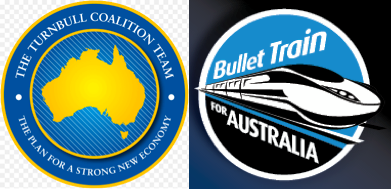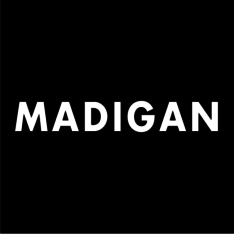Logos ‘a lottery’ for Senate candidates as branding debuts on ballot paper
The debut of party logos on the Senate Ballot Papers could see parties which have put time and thought into the design pick up votes ahead of more basic efforts.
 With logos appearing appearing on the Senate ballot paper for the first time, a leading designer said that most parties had not done enough to drive awareness of their logos ahead of polling day.
With logos appearing appearing on the Senate ballot paper for the first time, a leading designer said that most parties had not done enough to drive awareness of their logos ahead of polling day.
Hans Hulsbosch – founder of Hulsbosch design which has created logos for some of Australia’s biggest brands including Qantas and Woolworths – said many parties had missed a major opportunity to market themselves right at the moment voters were making their decision.
“The first question is: are they really of value?,” Hulsbosch told Mumbrella.
“If there is awareness or acuity in a name or a logo, then perhaps ‘yes’ because the iconography or symbolism may trigger memories or ideas in the person filling out the ballot paper which may not have been triggered just with a name typed on a page.”
“The thing with logos is that they are symbols, they are icons on people’s minds, and a really good logo or a symbol represents someone or something.
 But Hulsbosch said that the real value for parties with their logos on the ballot paper would not be realised unless the logo had been promoted widely ahead of the election.
But Hulsbosch said that the real value for parties with their logos on the ballot paper would not be realised unless the logo had been promoted widely ahead of the election.
He said voters could be swung to mark the box of a party under a logo based on its familiarity and not necessarily its policies.
“It may help them be voted for, if that person has positive associations with that party or that brand.”
Hulsbosch said that one of the issues was that voters could become confused if they were presented with a collection of logos on the Senate ballot paper that they did not recognise.
Logos such as the Shooters, Fishers and Farmers Party, or the Bullet Train for Australia Party would work because they represented what the party stood for.
 “To me they are successful because they visually bring to life and describe that core proposition of that party,” he said.
“To me they are successful because they visually bring to life and describe that core proposition of that party,” he said.
“If there is no awareness and no symbolism it just becomes wallpaper of no value to the voter. A classic example for me is the Madigan logo (John Madigan’s manufacturing and farming party). Who is Madigan and what does he stand for?
“It’s the same with AMEP (Australian Motoring Enthusiasts Party), who is that man figure that appears in that logo and how do I know what that party stands for unless he has a profile and I know what he stands for? Where is the motoring and where is the enthusiasm?”
He said that the logos would have greater meaning with younger voters “who are so attuned to symbolism that they will potentially choose the symbol that they think represents them”.
With the potential power of a logo on a ballot paper, Hulsbosch said most Senate contenders had not done enough to raise awareness of their logos.
“I have not seen any of them anywhere and it is a big, missed opportunity because to me they are probably not marketers and maybe are not aware of how to use an icon or an image successfully.
Hulsbosch said he has been unimpressed by both the Labor and Liberal election logos, with Labor relying on its stamp of “100 positive policies” and the Coalition’s shield declaring “The plan for a strong new economy”.
“I’d give them both a five out of 10,” he said.
“Neither of them gives me a very clear idea of what they stand for. They are a bit ‘wallpaper’ to me and they could have been much stronger.”


I follow politics so might be more across the main characters than other voters, but I would have thought most people could identify the man on the AMEP logo as Ricky Muir. He seems to have a pretty good reputation in the community for being fair and voting in the interests of his constituents, which was unexpected when he was first elected. So I would have thought that association was actually great for AMEP, and therefore the logo was brilliant. Not that I’ll be voting for them of course!
How about a giant red turd as the logo for the ALP and a blue one for the LNP.
People for sure would recognise that from the shit they have been dishing out for ages!